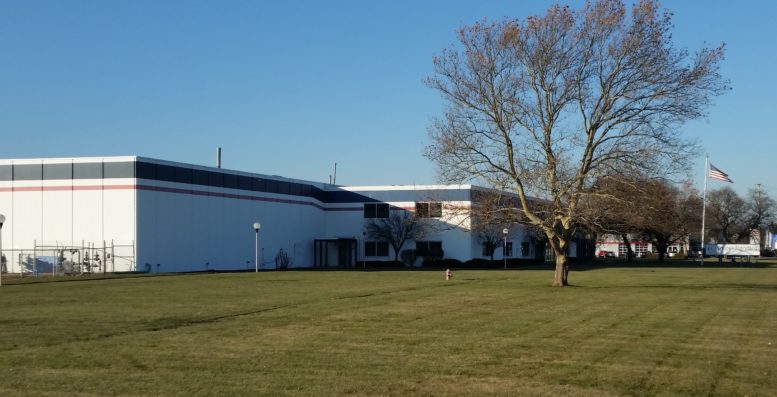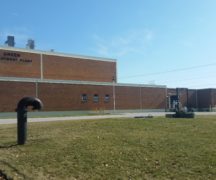By JAN LARSON McLAUGHLIN
BG Independent News
The cost to clean up contamination left behind on a Bowling Green industrial site is expected to hit more than $1.2 million.
The Ohio EPA held a public hearing Wednesday evening to explain the cleanup proposal and take citizen comments about the plan for the Cooper Standard Automotive property at 1175 N. Main St.
An investigation of the site found an area contaminated by Trichloroethylene (TCE), a common industrial solvent. “TCE was formerly used in industry as a cleaning agent,” Ghassan Tafla, from the Ohio EPA Division of Environmental Response and Revitalization, explained during the public hearing.
“It worked magically on auto parts to clean the grease,” Tafla said.
However, later TCE was found to pose a threat to the environment and public health. It is now only used in lesser amounts by the defense department.
The local contamination is believed to have occurred before Cooper Standard Automotive or Cooper Tire and Rubber Co. owned the site, since neither of those operations used TCE.
Cooper Standard Automotive purchased the 25-acre site from Cooper Tire and Rubber Co. in 2004. The property had been used by Cooper Tire to manufacture rubber hoses and seals for the automotive industry.
The previous owner of the site from 1964 to 1977 – Gulf & Weston – reportedly used TCE in its manufacturing of truck bodies, refuse packers and associated parts. That original company on the site is expected to be responsible for the cleanup, according to an EPA official. Gulf & Weston reportedly has insurance to cover such contamination and had made an agreement with Cooper Tire.
The TCE contamination was discovered in 1986 during the removal of underground storage tanks that held xylene, which was also used to degrease equipment. The contamination has been identified in the area west of the plant building, in the area of a former above ground tank which contained TCE.
The Cooper Standard Automotive plant currently employs about 370 people. Those employees are not at risk from the contamination, according to the EPA.
The indoor air monitoring results showed below risk levels set to protect human life. However, a Cooper Automotive employee at the EPA hearing said when air monitoring is done in the plant, the company shuts down the production lines that create more smoke. That is unrelated to this issue, EPA officials said, but they agreed that to get an accurate picture of the air quality, the lines normally operated should not be shut down for the sampling.
The site also does not pose a risk to the groundwater or soil of neighboring properties. “There is no contamination from the facility outside the boundary of the facility,” Tafla said.
Interim remedial action has already been taken to reduce TCE in soil and ground water on the site. The contaminated soil was not removed, but was treated with a chemical to neutralize the TCE. That measure reduced the contaminant mass in the soil and water by 90 percent, according to the EPA report. The effort was “very successful,” Tafla said.
The cleanup plan selected by the EPA calls for the following to occur:
- Limiting the property to industrial or commercial uses.
- Prohibiting the use of ground water for any purpose other than sampling to monitor contamination.
- Maintaining the asphalt parking lot as a cap over contaminated soil.
- Installing a passive ventilation system.
- Sampling of sub-slab soil gas and indoor air.
“It must protect the human health and the environment,” Tafla said.
The plan can be viewed online or at Ohio EPA’s Northwest District Office, 347 N. Dunbridge Road, Bowling Green; call 419-352-8461 to make an appointment. A copy of the preferred plan also has been provided to the Wood County District Public Library, 251 N. Main St., Bowling Green.
Written comments on the preferred plan will be accepted until Jan. 13, and may be emailed to ghassan.tafla@epa.ohio.gov or mailed to Ghassan Tafla, site coordinator, Ohio EPA, Northwest District Office, 347 N. Dunbridge Road, Bowling Green, OH 43402.





